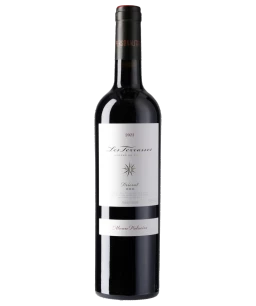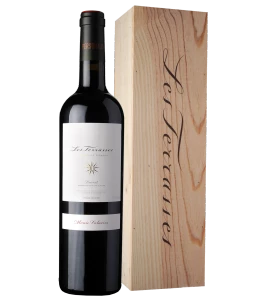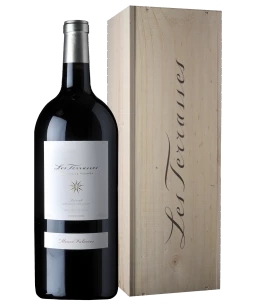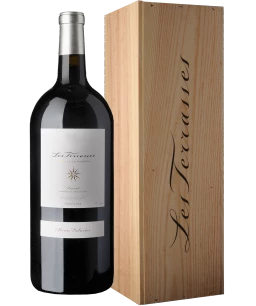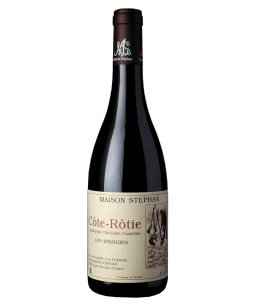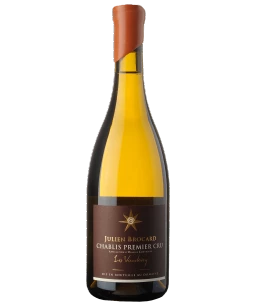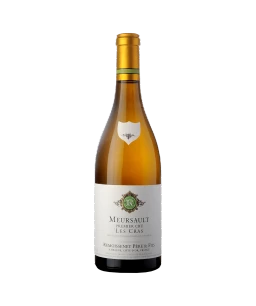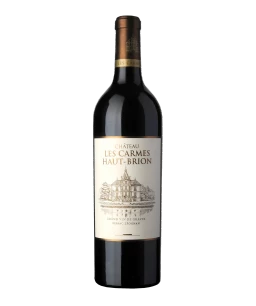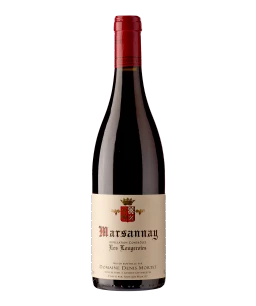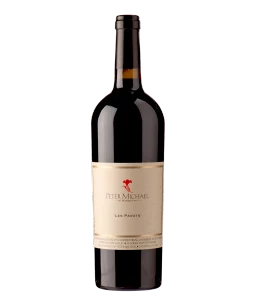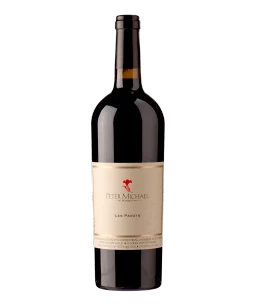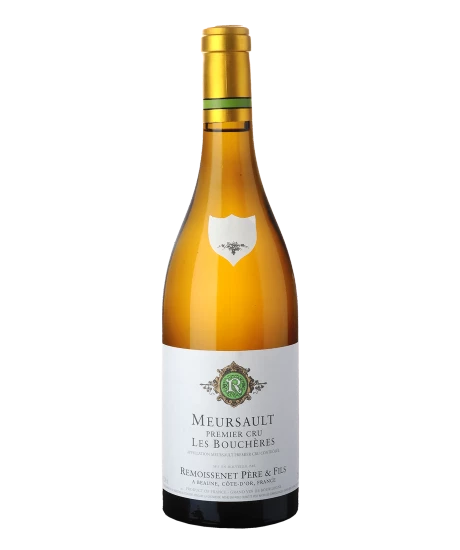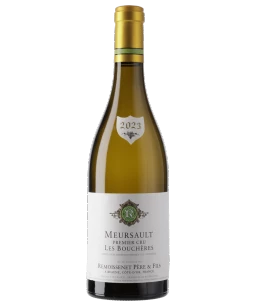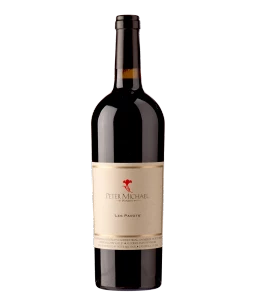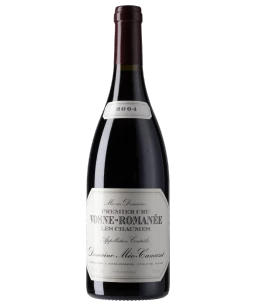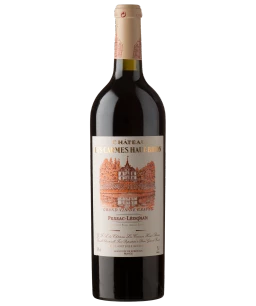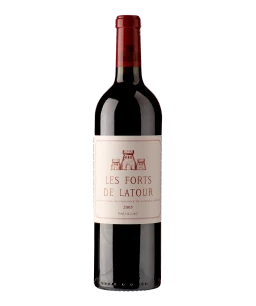Winetype
Sparkling wines
White wines
Rosé wines
Red wines
Sweet wines
Spirits
Other
Country
Argentina
Australia
Austria
Chile
Edibles
France
Germany
Ireland
Italien
Italy
Liechtenstein
New Zealand
Portugal
South Africa
Spain
Sweden
Switzerland
The Caribbean
USA
United Kingdom
Region
Abruzzo
Alsace
Alto Adige
Armagnac
Bordeaux
Bourgogne
Burgenland
California
Calvados
Campania
Campbeltown
Castilla y León
Catalunya
Champagne
Coastal Region
Cognac
Douro
England
Franconia
Friaul Julisch Venezien
Galicia
Genève
Germany
Gävleborgs län
Highland-Speyside
Highlands
Indiana
Island
Islay
Jamaica
La Mancha
Languedoc-Roussillon
Loire
Lombardia
Lowlands
Mallorca
Marche
Marlborough
Mendoza
Mittelrhein
Mosel
Murcia
Navarra
Neuenburg
Niederösterreich
Ostschweiz
País Vasco
Pfalz
Piemont
Provence
Puglia
Rheinhessen
Rhône
Rioja
Sherry
South Australia
Steiermark
Tessin
Ticino
Toscana
Valle Central
Venetien
Veneto
Victoria
Vins de Pays
Waadt
Wallis
West Sussex
Subregion
(AOC) Zürich
Adelaide Hills
Alto Adige
Amarone
Barbaresco
Barbera d'Alba
Barbera d'Asti
Barolo
Barossa Valley
Beaujolais
Bierzo
Bolgheri
Bolgheri Sassicaia
Bot River
Brindisi
Brunello di Montalcino
Castelli di Jesi
Chablais
Chablis
Chianti
Chianti Classico
Châteauneuf-du-Pape
Coeur-de-France
Colchagua
Coteaux de Béziers
Côte Chalonnaise
Côte Rôtie
Côte de Beaune
Côte de Nuits
Côtes de Bordeaux
Côtes de Provence
Côtes du Rhône
Côtes du Rhône Villages
Côtes du Rhône/Villages
Eden Valles
Franciacorta
Fronsac und Canon-Fronsac
Gigondas
Graubünden
Haut-Médoc
Heathcote
Jumilla
Kamptal
Langhe
Lavaux
Limoux
Lirac
Maipo
Margaux
Maule
McLaren Vale
Monferrato
Montepulciano d'Abruzzo
Montescudaio
Moscato d'Asti
Moulis
Mâconnais
Napa Valley
Nebbiolo d'Alba
Neuenburg
Neusiedlersee
North Coast
Pauillac
Penedès
Pomerol
Premières Côtes de Bordeaux
Primitivo di Manduria
Priorato
Péssac-Léognan
Ribera del Duero
Rueda
Ruwer
Rías Baixas
Salice Salentino
Sauternes, Barsac & Cadillac
Schaffhausen
Sonoma Coast
Sottoceneri
St-Emilion
St-Estèphe
St-Julien
Stellenbosch
Südsteiermark
Toro
Touraine
Trebbiano d'Abruzzo
Untermosel
Valdeorras
Valle de Uco
Valpolicella Superiore Ripasso
Vino Nobile di Montepulciano
Vins de Pays D'OC
Wachau
Wachenheim
Yecla
Zürich
Zürichsee
Grape variety
Aglianico
Airén
Albariño
Alicante Bouschet
Arneis
Auxerrois
Baco
Barbera
Blauer Silvaner
Blaufränkisch
Bourboulenc
Brunello
Cabernet Franc
Cabernet Sauvignon
Callet
Carignan
Carmenere
Chardonnay
Chasselas
Chenin Blanc
Cinsault
Clairette blanche
Colombard
Colorino
Cornalin
Cortese
Corvina
Corvinone
Counoise
Códega do Larinho
Diolinoir
Doral
Folle blanche
Gamaret
Gamay
Gargollassa
Garnacha
Garnacha Tintorera
Gewürztraminer
Giró ros
Glera
Godello
Gouveio
Graciano
Grauburgunder
Grenache
Grenache Blanc
Grenache gris
Gropello
Grüner Veltliner
Heida
Hermitage
Hondarribi Beltza
Hondarribi Zuri
Humagne blanc
Humagne rouge
Lagrein
Léon Millot
Macabeo
Malbec
Malvasia
Malvasia Nera
Mantonegro
Marsanne
Marzemino
Maréchal Foch
Mataro
Mazuelo
Mencia
Merlot
Monastrell
Montepulciano
Moscato bianco
Mourvèdre
Muscadelle
Muscat
Nebbiolo
Negroamaro
Parellada
Pedro Ximénez
Petit Verdot
Petite Arvine
Picpoul
Piedirosso
Pinot Beurot
Pinot Grigio
Pinot blanc
Pinot gris
Pinot meunier
Pinot noir
Prensal blanc
Primitivo
Prugnolo gentile
Rabigato
Rebo
Rheinriesling
Ribolla gialla
Riesling
Rondinella
Roussanne
Räuschling
Saint Laurent
Sangiovese
Sangiovese Grosso
Sankt Laurent
Sauvignac
Sauvignon Blanc
Serine
Shiraz
Sousão
Souvignier Gris
Souzão
Spätburgunder
Sylvaner
Syrah
Sämling 88
Sémillon
Tempranillo
Tinta Barroca
Tinta Cão
Tinta Roriz
Tinta de Toro
Torrontés
Touriga Franca
Touriga Nacional
Trebbiano
Ugni Blanc
Vaccarèse
Verdejo
Verdicchio
Vernaccia
Vernatsch
Viognier
Viosinho
Viura
Weissburgunder
Xarel-Lo
Zweigelt
Rating
Gambero Rosso
Parker
Vinum
Wine Spectator
Baur au Lac Vins
Vintage
1910
1936
1959
1964
1970
1976
1978
1982
1983
1986
1987
1988
1989
1990
1991
1992
1994
1996
1997
1998
1999
2000
2001
2002
2003
2004
2005
2006
2007
2008
2009
2010
2011
2012
2013
2014
2015
2016
2017
2018
2019
2020
2021
2022
2023
2024
Producer
4G Wines
Abelé 1757
Adega Valdés / Familie Valdés
Ahascragh Distillery
Al Porto
Alma Cersius
Alvaro Palacios, S.L.
Angelo Gaja
Atlan & Artisan
Az. Agr. Rivella Silvia
Azienda Agricola Pratello
Baron de Sigognac
Bas Armagnac Castarède / Fam. Castarède
Baur au Lac
Bladnoch Distillery
Bodega Hermanos del Villar, S.L.
Bodega Palacios Remondo
Bodega Rafael Palacios S.L.
Bodegas Amézola de la Mora
Bodegas Antídoto
Bodegas Campos Reales
Bodegas Olivares / Paco Selva
Bodegas Ribas
Bodegas Zárate
Bodegas y Viñedos Artadi de Laguardia
Bodegas y Viñedos Artazu
Bonvin
Bordeaux Collection
Bordeneuve
Breil Pur
Brennerei Hubertus Vallendar
Brivio / Gialdi
Cantina Monti
Cantine Due Palme
Casa Bernal
Casa Emma Società Agricola S.S.
Casa Lupo by Paladin
Cascina Barisél / Franco Penna
Cascina Morassino / R. & M. Bianco
Castello Bonomi
Castello del Terriccio
Castro Ventosa / Fam. Pérez Pereira
Champagne Agrapart
Champagne André Clouet
Champagne Philipponnat
Charles Rolaz
Chazánte
Château Angélus
Château Ausone
Château Batailley
Château Beauséjour Duffau-Lagarrosse
Château Beauséjour-Bécot
Château Bellevue
Château Beychevelle
Château Biac
Château Boyd-Cantenac
Château Branaire-Ducru
Château Brane Cantenac
Château Calon-Ségur
Château Canon
Château Canon-La-Gaffelière
Château Cantemerle
Château Cantenac-Brown
Château Capbern
Château Charmail
Château Chasse-Spleen
Château Cheval Blanc
Château Clerc-Milon
Château Clinet
Château Clos Fourtet
Château Cos d'Estournel
Château Coutet
Château Côte de Baleau
Château Ducru-Beaucaillou
Château Duhart-Milon
Château Durfort-Vivens
Château Ferrière
Château Fieuzal
Château Figeac
Château Gazin
Château Giscours
Château Gloria
Château Grand-Puy-Ducasse
Château Grand-Puy-Lacoste / Fam. Borie
Château Gruaud-Larose
Château Haut-Bages-Libéral
Château Haut-Bailly
Château Haut-Batailley
Château Haut-Brion
Château La Communion
Château La Conseillante
Château La Gaffelière
Château La Lagune
Château La Mission Haut-Brion
Château La Violette
Château Labégorce
Château Lafite-Rothschild
Château Langoa Barton
Château Latour
Château Latour-Martillac
Château Le Gay
Château Le Pin
Château Les Carmes Haut-Brion
Château Les Carruades de Lafite
Château Les Ormes-de-Pez
Château Les Valentines
Château Lynch Bages
Château Léoville-Barton
Château Léoville-Las-Cases
Château Léoville-Poyferré
Château L’If
Château Malartic-Lagravière
Château Malescot Saint-Exupéry
Château Margaux
Château Marquis de Terme
Château Meyney
Château Montrose
Château Moulin Haut-Laroque
Château Mouton-Rothschild
Château Nenin
Château Palmer
Château Pape-Clément
Château Paveil-de-Luze
Château Pavie Macquin
Château Pedesclaux
Château Phélan-Ségur
Château Pichon Longueville-Comtesse
Château Pichon-Longueville Baron
Château Pontet-Canet
Château Pouget
Château Poujeaux
Château Prieure Lichine
Château Rauzan-Ségla
Château Raymond Lafon
Château Rouget
Château Saint-Pierre
Château Sansonnet
Château Smith Haut Lafitte
Château Sociando-Mallet
Château Soutard-Cadet
Château Talbot
Château Troplong-Mondot
Château Villars
Château d'Armailhac
Château d'Auvernier / Thierry Grosjean
Château d'Issan
Château d'Yquem
Château de Sales
Château l'Eglise Clinet
Château l'Evangile
Cidrerie A. Heftig
Cims de Porrera
Clos Floridène
Clos des Papes
Colonsay Beverages
Completer-Kellerei / Giani Boner
De Ladoucette au Château du Nozet
De Toren
Descendientes de J. Palacios, S.L.
Destillerie Steinauer
Distillerie Tessendier & Fils
Diverse
Djin Spirits
Dom. Baron de Rothschild & Concha y Toro
Domaine Armand Rousseau
Domaine Barons de Rothschild Lafite
Domaine Bonneau du Martray
Domaine Claude Dugat
Domaine Comte Georges de Vogüé
Domaine Cornulus
Domaine Denis Mortet / Arnaud Mortet
Domaine Hudelot-Noëllat
Domaine Julien Brocard
Domaine Laurent Perrachon & Fils
Domaine Leflaive / Anne Claude Leflaive
Domaine Les Hutins
Domaine Marcel Couturier
Domaine Marcel Deiss
Domaine Marquis d'Angerville
Domaine Mathias / Mathias Gilles
Domaine Ponsot
Domaine Thomas Collardot
Domaine Tollot-Beaut / Nathalie Tollot
Domaine d'Eugénie
Domaine de Cabasse
Domaine de Chevalier
Domaine de Ferrand
Domaine de Pégau / Fam. Féraud
Domaine de la Commaraine
Domaine des Pères de l'Eglise
Dominio de Pingus
Dr. Bürklin-Wolf / Fam. Bürklin
Duc de Loussac
Duckhorn Vineyards
E. Guigal
Elias Mora
Emmerich Knoll
Erich Meier
F.X. Pichler
Fattoria Galardi
Fattoria La Gerla / Sergio Rossi
Fattoria Nicodemi / Fam. Nicodemi
Fever-Tree
Figuero
François Chidaine
Fratelli Marolo
French Bloom
G. & J. Guillerault / Sebastian Fargette
G.Brivio, A.Delea, F.Gialdi, C.Tamborin
Georg Schlegel
Geschenk-Collection
Grandes Vinos Clásicos
Gut Oggau
Gutiérrez Colosía
Hansruedi Adank
Hawkridge Distillers
Heymann-Löwenstein / Fam. Löwenstein
Il Molino di Grace
J. & M. Dizerens
Kangarilla Road / Helen u. Kevin O'Brien
Karthäuserhof
Krug
Kühling-Gillot
La Tour-Blanche / Alex Barrau
Luc Massy
Luciano Sandrone
Luddite Wines / Fam. Verburg & Meyer
Maison Stéphan
Marcelo Pelleriti Wines
Marchesi Alfieri
Marchesi Antinori
Maria Casanovas
Massena / Jaysen Collins
Mauro Molino
Michel Rolland / Travis Braithwaite
Montepeloso
Mossburn
Moët Hennessy
Nautilus Estate
Nicolas Feuillatte
Nyetimber
Opus One / Fam. Mondavi & Fam. Rothschil
Paladin
Paolo Conterno / Fam. Conterno
Park
Penfolds
Peter Michael Estate
Petrus
Pierre-Luc Leyvraz
Pievalta
Podere Le Bèrne / Fam. Natalini
Polz
Principe di San Martino
Pulltex
Quinta das Bandeiras / Fam. Bergqvist
Quinta de la Rosa
Ramiro Wine Cellar
Remoissenet Père & Fils
Rings
Rocche Costamagna / Alessandro Locatelli
Roland und Karin Lenz
Rosa Bosco
Rütihof
Salzl
Sette Cieli
Signatory Vintage
Standish / Dan Standish
Susana Balbo Wines
Tarlant
Tenuta Castello di Morcote
Tenuta San Guido
Tenuta dell'Ornellaia
The Whisky Cellar
The Wild Alps
Victorinox
Vieux Château Certan
Ville de Lausanne
Viñedos Lacalle y Laorden
Viñedos Terranoble
Weingut Heidelberg / Hanspeter Lampert
Weingut Nicolussi-Leck
Weingut Ratzenberger / Fam. Ratzenberger
Weingut Schloss Gobelsburg
Weingut Zehnthof Luckert
Wild Duck Creek / Fam. Anderson
Wilhelm Marx
Varietal purity
One grape variety
Several grape varieties
Label
Certified organic or biodynamic wine
Certified organic or biodynamic wine with no declaration on the label
Vegan
Vegan & Certified organic or biodynamic wine
Bottle size
20 cl
25 cl
35 cl
37 cl
50 cl
70 cl
75 cl
100 cl
140 cl
150 cl
225 cl
300 cl
450 cl
500 cl
600 cl
900 cl
1200 cl
1500 cl
1800 cl
Price
until 20.-
20.- until 50.-
50.- until 100.-
100.- until 200.-
200.- until 500.-
500.- until 1000.-
over 1000.-
Product category
Limited/Rarity
Assortment Baur au Lac Vins
Exclusivity Baur au Lac Vins
Food Pairing
Barbecue Season
Cheese
Venison
Lamb
Beef
Pork
Poultry
Vegetarian
Pasta
Seafood
Fish
Aperitif
Type of spirits
Aperitifs
Brandy
Calvados
Cognac, Armagnac
Dessert wine
Gin, Vodka, Korn
Grappa, Marc
Liqueurs
Rum
Sherry
Whisky, Whiskey
various
Subskription
keine Subskription
Subskriptionsweine
Alcoholic strength
No value
0% non-alcoholic
0.1%-9.9%
10.0%-12.9%
13.0%-13.9%
14.0%-15.9%
16.0%-19.9%
20.0%-39.9%
40.0%-47.9%
from 48.0%

